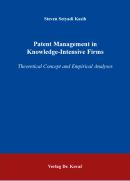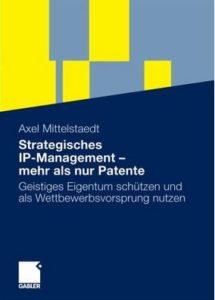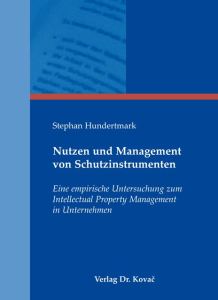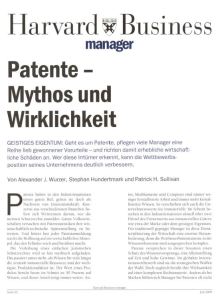Patent management in the telecommunications industry is crucial for success – current study
An analysis by the University of Mannheim shows that systematic patent management in knowledge-intensive industries such as ITC leads to greater innovation success. The degree of professionalism in patent management and the existence of a documented patent strategy are related to the success of the innovation.
Review (published in the Mitteilungen der Patentanwälte 12/2016)
 Steven Setyadi Kasih: Patent Management in Knowledge-Intensive Firms,
Steven Setyadi Kasih: Patent Management in Knowledge-Intensive Firms,
Verlag Dr. Kovac, Hamburg, 1. Auflage, 2015,
198 Seiten, ISBN-978-3-8300-8567-6, 88,90 c.
Also interesting:
 Highly recommended overview of the various instruments of the IP and their strategic application. The anchoring in the company is also discussed in detail. Especially for non-lawyers a profitable reading to get into the topic.
Highly recommended overview of the various instruments of the IP and their strategic application. The anchoring in the company is also discussed in detail. Especially for non-lawyers a profitable reading to get into the topic.
Mittelstaedt, Axel: Strategisches IP-Management – mehr als nur Patente, Springer Gabler: 2009.
Can it be empirically proven that the combination of different protective instruments really increases the yield of innovations?
 Stephan Hundermark pursued this question in his dissertation from 2012. It can show that the targeted combination of protective instruments actually increases innovation success. How the synergies can be achieved from the integrated use is presented in a practical manner and from a company perspective. The approach to the selection, management and control of protective instruments is particularly recommended.
Stephan Hundermark pursued this question in his dissertation from 2012. It can show that the targeted combination of protective instruments actually increases innovation success. How the synergies can be achieved from the integrated use is presented in a practical manner and from a company perspective. The approach to the selection, management and control of protective instruments is particularly recommended.
Patents – Myth and Reality
When it comes to patents, many managers cultivate a number of beloved prejudices – and thus cause considerable economic damage. Anyone who recognizes these errors can significantly improve the competitive position of the company.
 Here are the main myths:
Here are the main myths:
- Myth 1: Patents protect against plagiarism
- Myth 2: Business models are not patentable
- Myth 3: Patents are no real assets
- Myth: 4 Those who patent a lot are innovative
- Myth 5: Patents are only for lawyers
- Myth 6: Many patents make you invulnerable
- Myth 7: Open innovation doesn’t need patents
Conclusion: These seven myths cause damage worth billions of dollars. The article from Harvard Business Manager explains how these myths can be overcome and thus bring profit to the company.



